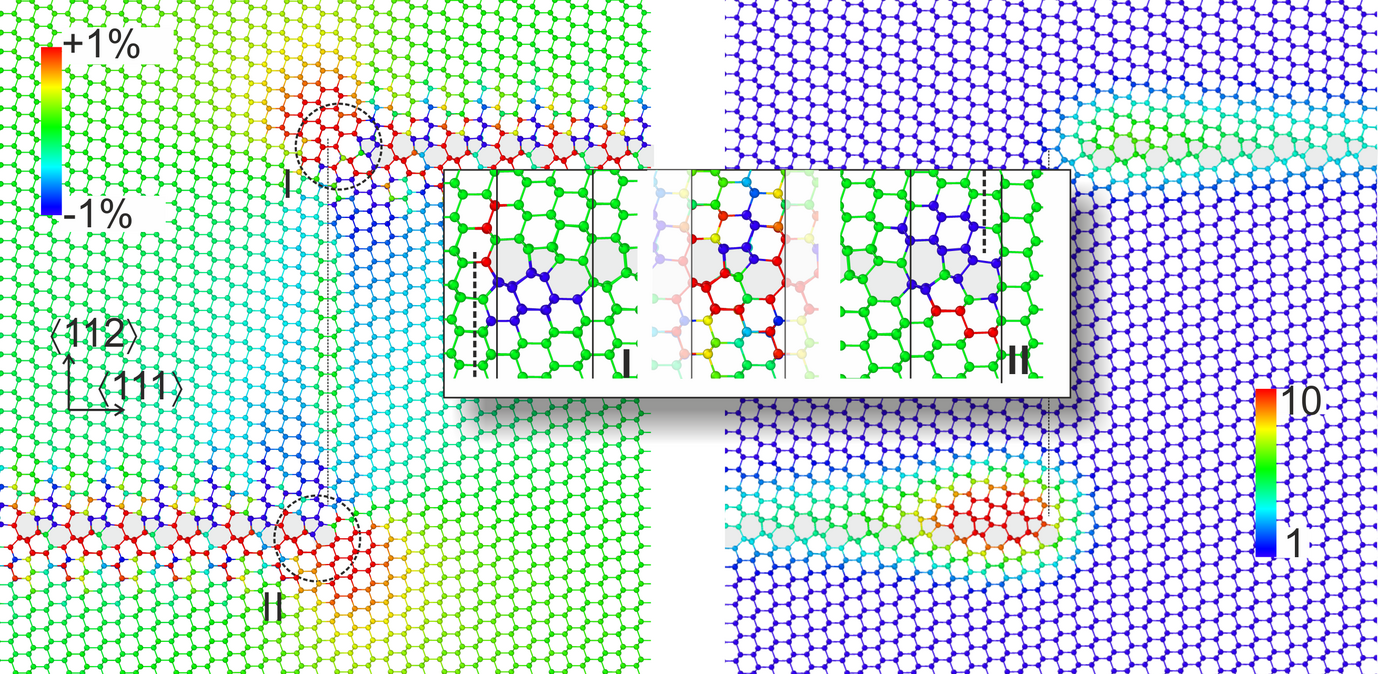Asymmetric Line Segregation at Faceted Si Grain Boundaries
The energetics as well as atomistic mechanisms underlying the segregation of impurities at Si grain boundaries (GB) and GB junctions have been investigated.
Interfaces significantly influence the properties of multi-crystalline Si. More specifically, they introduce states in the fundamental band gap thereby allowing preferential impurities segregation and/or the formation of stable or metastable equilibrium interface phases.
In the present work we investigate the segregation of C impurities at flat and faceted Si Grain Boundaries (GBs). In a first step we employ density functional theory (DFT) calculations to parametrize Si, C and Si-C modified embedded atom method (MEAM) interatomic potentials. Careful benchmarks show that the potentials provide an accurate description of the atomic geometry and energetics of intrinsic Si GBs (Wulff diagram) as well as of the C segregation at the aforementioned interfaces.

Based on the new potential, we identified the preferential carbon segregation at faceted GBs at the experimentally relevant length scale. Using this insight we are able to interpret the experimental findings indicating an asymmetric line segregation of impurities along one particular type of facet junction core, instead of a homogeneous decoration of the facet planes. More specific we showed that this asymmetric segregation pattern is a consequence of the interplay between the atomic arrangements at the core structure of the facet junction and the corresponding local strain state.
The project is a collaborative activity with the MA and SN departments and the groups of Atom Probe Tomography and Advanced Transmission Electron Microscopy.
